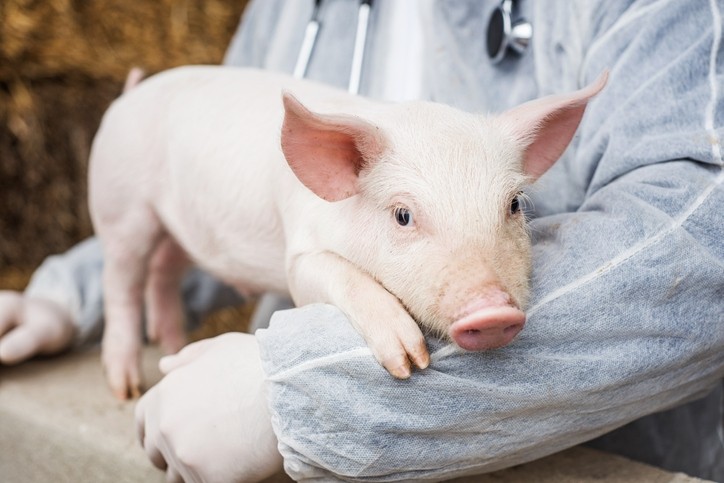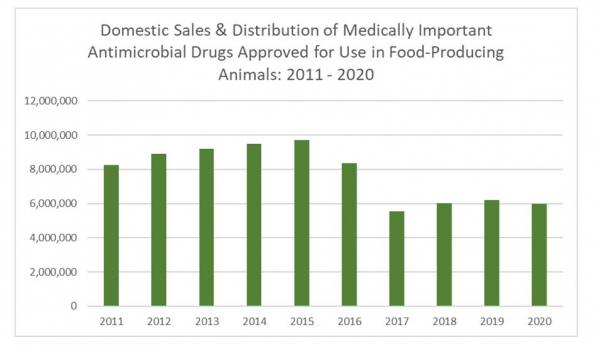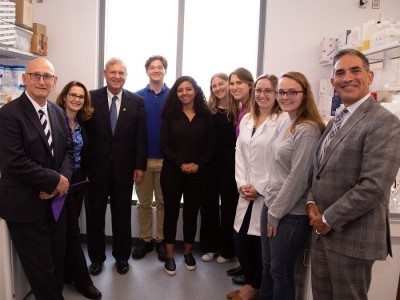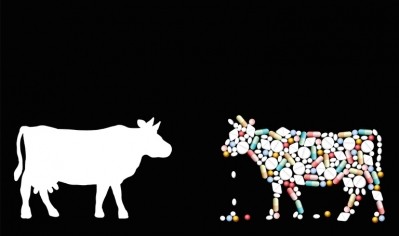Dip in antibiotic sales to US livestock sector but activists call for bolder actions

Released yesterday [December 14], the data suggest that continued efforts to support the judicious use of antimicrobials in livestock and poultry are having an impact, said the FDA’s Center for Veterinary Medicine (CVM).
While sales data on antimicrobial drug products intended for farmed animals do not necessarily reflect the actual use of antimicrobial drugs, the US regulator said sales volumes observed over time can be a valuable indicator of market trends related to these products.
The past few years have seen some fluctuation in the reported sales volumes of such medically important drugs in the farm sector. A decrease this time around, but the previous two years' data indicated a rise in sales - a 3% hike in 2019 compared to the year prior, and a 9% increase in 2018 versus 2017, following what had been a slowdown for three years.
According to the FDA, given the substantial change that occurred with transitioning a large number of products containing medically important antimicrobials from over-the-counter use to a marketing status requiring veterinary oversight at the beginning of 2017, some rebound in the reported sales volume in subsequent years was not unexpected as affected stakeholders adjusted to the new requirements.
The domestic sales and distribution of medically important antimicrobials approved for use in US farmed animals for 2020, as per the report, showed:
- An estimated 41% was intended for use in cattle, an estimated 41% intended for use in swine, an estimated 12% intended for use in turkeys, an estimated 2% intended for use in chickens, and an estimated 4% intended for use in other species/unknown.
- Tetracyclines accounted for 66%, penicillin drugs for 13%, macrolides for 7%, sulfonamides for 5%, aminoglycosides for 5%, lincosamides for 2%, cephalosporins for less than 1%, and fluoroquinolones for less than 1%.
- An estimated 80% of cephalosporins, 57% of sulfonamides, 54% of aminoglycosides, and 43% of tetracyclines were intended for use in cattle. An estimated 87% of lincosamides and 42% of macrolides were intended for use in swine, while an estimated 64% of penicillin were intended for use in turkeys.
The agency’s objective, it continued, is to slow the development of antimicrobial resistance (AMR) and preserve the effectiveness of antimicrobials for fighting disease in animals and humans.
While there has been progress made toward antimicrobial stewardship goals, the FDA noted that additional work is needed to address AMR.
The CVM’s five-year action plan outlines steps it is taking to further foster antimicrobial stewardship in veterinary settings.
Call to end routine use on-farm of medically important antibiotics
US campaigners, PIRG, responded to the FDA report.
“Any decrease in antibiotics sales to the meat industry is encouraging to see but it’s a drop in the bucket compared to the decline we truly need to address antibiotic overuse.
“If we don’t change our ways, antibiotic resistance could claim millions of lives globally. The good news is that we know how to address it now – the less we use antibiotics, the better our chances of preserving these life-saving medicines for the future.
“For a blueprint for positive change, our lawmakers should look to the European Union, where a new policy taking effect in 2022 will prohibit routinely using medically important antibiotics to prevent disease brought on by industrial farming conditions. That’s the kind of bold action we need in the United States," commented PIRG's public health campaigns director, Matt Wellington.
Tracking antibiotic use at farm level
An activist group that includes the US Natural Resources Defense Council (NRDC) and the US Center for Food Safety (CFS) wants the US regulator to close the gap on actual use data for antibiotics at the farm level.
In an open letter published earlier this year, they called on the Biden administration to establish a national target to reduce medically important livestock antibiotic use by 50% by the end of 2023, relative to 2009 levels, and for it to develop a robust system for tracking antibiotic use and resistance at the farm level, calling that a major gap.
“Both would set the US on the right course to prevent another public health disaster and ensure that life-saving medicines continue to work when we need them.”
The letter noted how, in the absence of federal leadership in recent years, restaurants have played a critical role by setting and implementing policies to serve only meat raised without the routine use of medically important antibiotics.
“Panera, Chipotle, Chick-fil-A, McDonalds, KFC, and more than a dozen other restaurant chains have proven that change is possible. Their commitments to sourcing chicken raised without medically important antibiotics have transformed antibiotic use practices in the US chicken industry.”
A similar wave of change has not yet happened in the beef or pork sector, they said.









